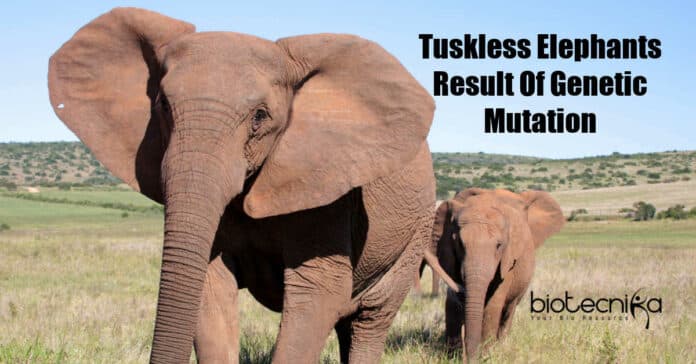Tuskless Elephants Result Of Mozambique Civil War
According to research conducted by researchers at Princeton University, severe ivory poaching in parts of Mozambique has resulted in the evolution of tuskless elephants.
The research, issued in Science magazine, discovered that once a rare genetic condition had become more prevalent in Gorongosa National Park as ivory poaching practiced to fund a civil war forced the species to the edge of extinction.
Prior to the war, approximately 18.5% of female elephants were born without tusks. But, amongst elephants born after the early 1990s, this number has risen upto 33%.
Mozambique’s civil war, which continued from 1977-1992, resulted in slaughtering 90% of the elephant population by opponents on both sides. Poachers used ivory to support the conflict between anti-communist insurgents and the government.
Just like eye color and blood type in humans, genes ascertain whether elephants inherit tusks from their parents or not.
Hunters didn’t hunt tuskless elephants, raising the probability that they would breed and pass on the tuskless characteristic to their progeny.
Scientists have long speculated that the characteristic, which is only observed in female elephants, is linked to the sex of the elephant. A study of the genomes of tusked and tuskless elephants unveiled that the trend was due to a mutation on the X chromosome that was lethal to males, letting them develop poorly in the uterus and dominant in females.
Prof. Robert Pringle, Princeton University, the co-author of the study, stated that the results could have several long-term consequences for the species.
He considered that as the tuskless trait was lethal to male offspring, only a few elephants would be born. This could hinder the recovery of the species, which has a populace of just above 700 in the park.
He further added that the tusklessness might be beneficial during a war; however, that comes at a cost.
Other significant findings of the research include – tusked and tuskless animals eat different plants.
On the other hand, he emphasized that the trait was reversible with time as populations recovered from the verge of extinction.
He commented that subsequently, it is expected that this syndrome will reduce in number in their study population, considering that the conservation picture remains as positive as it has been lately.
He stated that there had been many discouraging headlines about biodiversity and humans in the environment, and he believes it’s crucial to emphasize that there are some silver lines around the cloud.
Also Read:
-
One-shot Sputnik Light Shows 70% Potency Against Delta SARS-CoV-2
-
Understanding DNA Repair Mechanism Might Lead To Improved Cancer Therapies
- American Surgeons Successfully Transplanted Pig Kidney To A Human Patient
-
How Brain Cells Repair Their DNA Exposes ‘Hot Spots’ Of Aging And Disease
Download Biotecnika App for more Updates on Life Sciences, Job vacancies, CSIR-NET, GATE, and a lot more.






